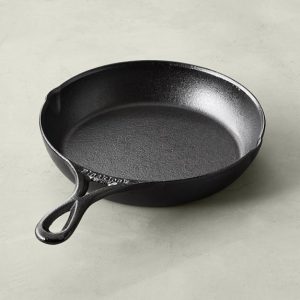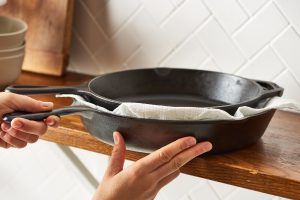When we began our blog, The Bachelor’s Kitchen found a need. Most single men are not as comfortable in the kitchen as they should be. Thus, they don’t eat well. And most of the information about cooking and food are geared more toward women cooking for their families. Certainly, thats a good thing, but I thought another perspective was needed. And so, The Bachelor’s Kitchen Blog began.
One of the targets of this blog were men getting back into the kitchen, whether a recent college grad setting up his first apartment or a divorced genetleman who rarely cooked before except on an outdoor grill. Thus, we began with posts like this, about the basics of being in a kitchen. From time to time, we like to look back on those basics and see if they need updating.
When setting up a kitchen for the first time or downsizing to a smaller kitchen, one of the first things to be considered is kitchen equipment. So, let’s start with pots and pans and other cooking vessels.

Now, we’re not talking about all the possible things you might need, just the basics you need to make a simple meal. And I think the best points to consider are versatility and value.
The Most Useful Pan In The Kitchen

At the top of my list is a cast-iron skillet. This old-fashioned pan is incredibly inexpensive, extremely versatile, and with proper care can last for generations. If you can, shop for one at estate sales, yard sales, or second-hand stores, because these skillets probably are already broken-in, especially if you can get one at an estate sale. But even new, cast iron is relatively inexpensive. Prices new range from as little as $10 for an 8-inch model to around $35 for a 15-inch. Many of the new skillets being produced today are pre-seasoned. That means they have been treated with some kind of oil or fat after being heated. Seasoning makes these skillets practically non-stick.
What’s Is This ‘Seasoning’ thing?
Even if the pan comes pre-seasoned, you’re going to want to understand how to keep it seasoned. However, it’s not as difficult as some think it is. Years ago, many chefs and cooks held to this number one rule: No Soap Ever! But that is not really true. Remember, this is solid iron. It can take a lot of punishment, including soap. Sometimes, a greasy mess cannot be delt with any other way. Just save that for when you have a very dirty pan. Most of the time, you won’t need that.
The reason some say never to use soap is that building up the seasoning that makes this pan so useful is important. Detergent will strip away the seasoning. In this case, grease is good. Cast iron routinely should be cleaned with just hot water and a sponge. You can use one designed for non-stick cookware if you need a little extra abrasion. Really tough stuck-on gunk can be dealt with by adding a couple tablespoons of kosher salt after you’ve drained off as much grease as possible. Use a wooden spoon to gently scrape up the stuck-on food. Why kosher salt? Because it’s the right size to provide gentle erosion without scratching the nice seasoned patina. Then soak in hot water. While soaking in hot water, use your sponge to work the pan clean. It will still be a little greasy feeling, but that’s okay, it’s still clean. If you can’t soak the pan, pour water into the pan and put it over medium-high heat until the water starts to boil. Then turn off the heat at let the inside of the pan soak until it cools. Either way, it is now time to prepare the pan for next use.
Now Keep That Pan In Best Shape
Once your pan is well-seasoned, you’ll probably only need to wipe out the pan with a paper towel or sponge.
If you have to soak the pan, you’ll want to re-season. Once the pan is dry, use a paper towel to apply a thin, even coat of oil, shortening, or cooking spray. Make sure no oil is pooling on the inside of the pan. Place the pan in a very warm oven and turn off the heat and allow it to set in the oven until cool.
Then place a clean paper towel inside the pan before you put it away.
With care, the cast iron skillet will last for generations. It can be used for baking as well as frying. The larger ones are great for making sauces, gravies, one-dish meals, casseroles, and even bread. I wouldn’t use anything else to make authentic Southern-style cornbread. And it works great for making flatbreads, like focaccia. It’s also the perfect vehicle for making steaks because it takes high heat, produces a great sear, and then goes into the oven to finish.
The cast iron skillet is probably one of the best pans you’ll ever have for the money. It’s well worth the investment.



